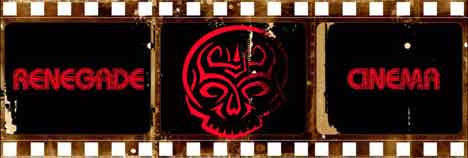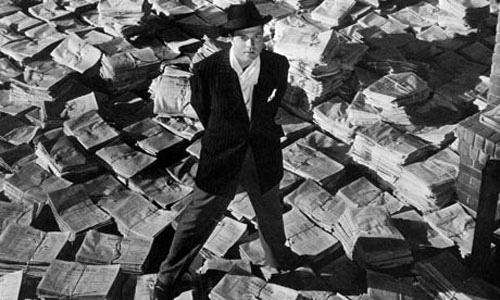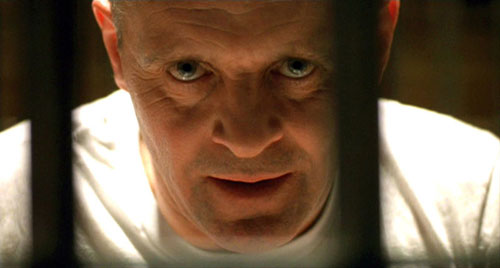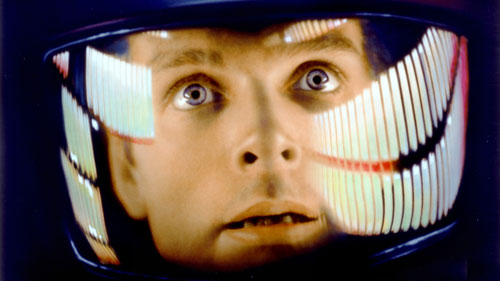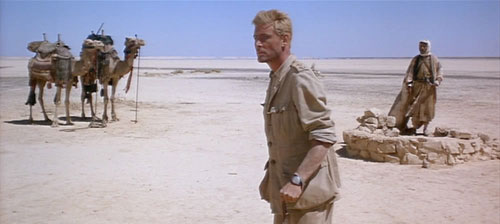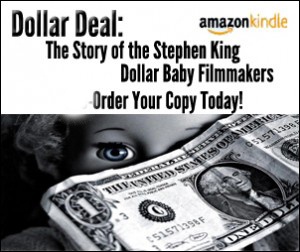There are some movies that you just can’t experience at home on your TV or laptop the same way that they are experienced projected onto the big screen. For starters, the methods of display are different. One beams electrical images into your eyes and the other projects light and shadow onto a screen. Now neurologically, this doesn’t really make any different – an image is an image. However, in our subjective and psychological perspectives, these two experiences are in fact very different. There’s nothing quite like sitting in a dark theater with a group of strangers and sharing in the joy and wonderment of a fantastical story, or the spectacle of spectacular vistas, or the catharsis of a heartbreaking tragedy. People come together in these dark rooms like they can nowhere else – in the beautiful, honest, and fleeting moments in the dark of the matinee.
6. Metropolis (1927)
Fritz Lang’s Metropolis is an age old story – and as I think I’ve mentioned previously, one that is repeated time and time again to lesser and lesser effect throughout film history. It is perhaps a bit simplistic, deceptively dark, and grandly idealistic, but it is all the more beautiful for those reasons. Not only is it a compelling story with relatable societal and class issues at its core, but it is a spectacle of a movie for 1927. The sets are grandiose and imposing, and somehow manage to convey a sense of dreamlike wonder at the same time as seeming surprisingly realistic. It seems unthinkable that such an early movie could accomplish set designs and special effects like Lang created in this, but the film somehow exists and is awesome to see on the big screen.
5. Citizen Kane (1941)
Part of why Orson Welles’ Citizen Kane should be seen on the big screen is the same reason Metropolis should – the imposing, almost dreamlike sets. Though Welles denied any familiarity with German Expressionism at the time, the similarity to Lang and other German Expressionist filmmakers of the 20s is unmistakable in Kane’s mise-en-scéne – in Welles every choice of framing, lighting, staging, and camera movement. In addition to this, Welles use of extreme deep focus is particularly striking – especially when used in scenes containing multiple close ups and expressive acting – and especially affecting when seen on the big screen in intense detail. And in the end, Citizen Kane is about big characters, and what better way to see them than as towering figures of light and shadow.
4. Jaws (1975)
Though I’m not a fan of Steven Spielberg as a rule, I do happen to have a soft spot for the first ever blockbuster. There is perhaps no better example of a thriller in the man vs. nature genre of films, and certainly not any that are more fun. And if you get the chance to see it in a crowded theater, get ready to experience this story of a man eating shark like you never have before. Not only does the sea seem more vast and less friendly, but the shark is bigger and the gut wrenching music is louder. You will feel the tension of your fellow movie-goers, and they will feel yours. The best is when there are people in the audience who haven’t seen the movie before, because the surprise and fear that they experience makes you believe in the magic of movies again – and that maybe there was a time long past when Steven Spielberg could have been a great filmmaker.
3. Silence of the Lambs (1991)
This one might seem like an odd choice for big screen fare. In fact, every time I choose Silence of the Lambs for something it seems out of left field, it’s just that kind of movie and I happen to like it for a lot of different reasons. One of the most unique things about this movie is how many straight on addresses there are to the camera and in tight close ups. It was unusual at the time and continues to be a technique not commonly used. And here’s why director Jonathan Demme does this – because for all the pretense of this movie being a thriller about a pair of serial killers and the pursuit to put them to justice, its ultimately a movie about the male gaze and the struggle of a woman in a male dominated job in a male dominated world. All those direct addresses to the camera, all those staring, unblinking eyes are all directed at Jodie Foster’s Clarice Starling – and also ultimately at the viewer. It is one of the most uncomfortable movie going experiences ever to sit in a dark room and have giant piercing eyes stare at you as if you were just so much meat.
2. 2001: A Space Odyssey (1968)
There are a lot of space movies out there, and let’s be honest, they should all be seen on the big screen – after all, space is big. But Kubrick’s masterful 2001: A Space Odyssey is the mother of all space movies and there’s really no other way to experience it, period. Even the bits that aren’t in space are just plain better. The whites are whiter and the contrasts are starker, the mysterious monolith more menacing and mysterious, and the piercing mechanical eye of HAL definitely more demented. If there’s one thing you can say about this strange and sterile movie is that it has scope, and scope deserves a big stage.
1. Lawrence of Arabia (1962)
Before hobbits, dwarves, elves, and wizards traversed the great cinematic expanses of middle earth, there was David Lean’s 1962 epic Lawrence of Arabia, filmed in super widescreen 70mm. Lawrence is the ultimate big screen movie, with sweeping panoramic shots of pristine deserts and caravans of camel riding Bedouins that really wrack up the runtime. But just like Peter Jackson’s collection of New Zealand tourism specials, it really must be seen on the big screen to be truly appreciated. In all seriousness, Lawrence of Arabia is one of the greatest movies ever made and is life-changing to see in all its widescreen glory. Add to that an iconic musical score and the breathtaking beauty of a very young Peter O’Toole, and you have yourself the greatest big screen adventure of all time.
